Spots to visit in Jodhpur
The northwest Indian province of Rajasthan has been a vacation destination throughout recent centuries. Guests from China and even Rome used to visit the Rajput realms and record their encounters in t
The northwest Indian province of Rajasthan has been a vacation destination throughout recent centuries. Guests from China and even Rome used to visit the Rajput realms and record their encounters in t

The northwest Indian province of Rajasthan has been a vacation destination throughout recent centuries. Guests from China and even Rome used to visit the Rajput realms and record their encounters in their journals.
In the advanced world, the marvels of Rajasthan are of such miracle that every year countless guests from India as well as around the world stay with this territory of Thar desert. On the off chance that you are considering making a visit to this extremely delightful state, you should begin your outing with the notable city of Jodhpur. Why so? All things considered, keep perusing this article as we present before you the best places in Jodhpur to make your excursion beneficial.
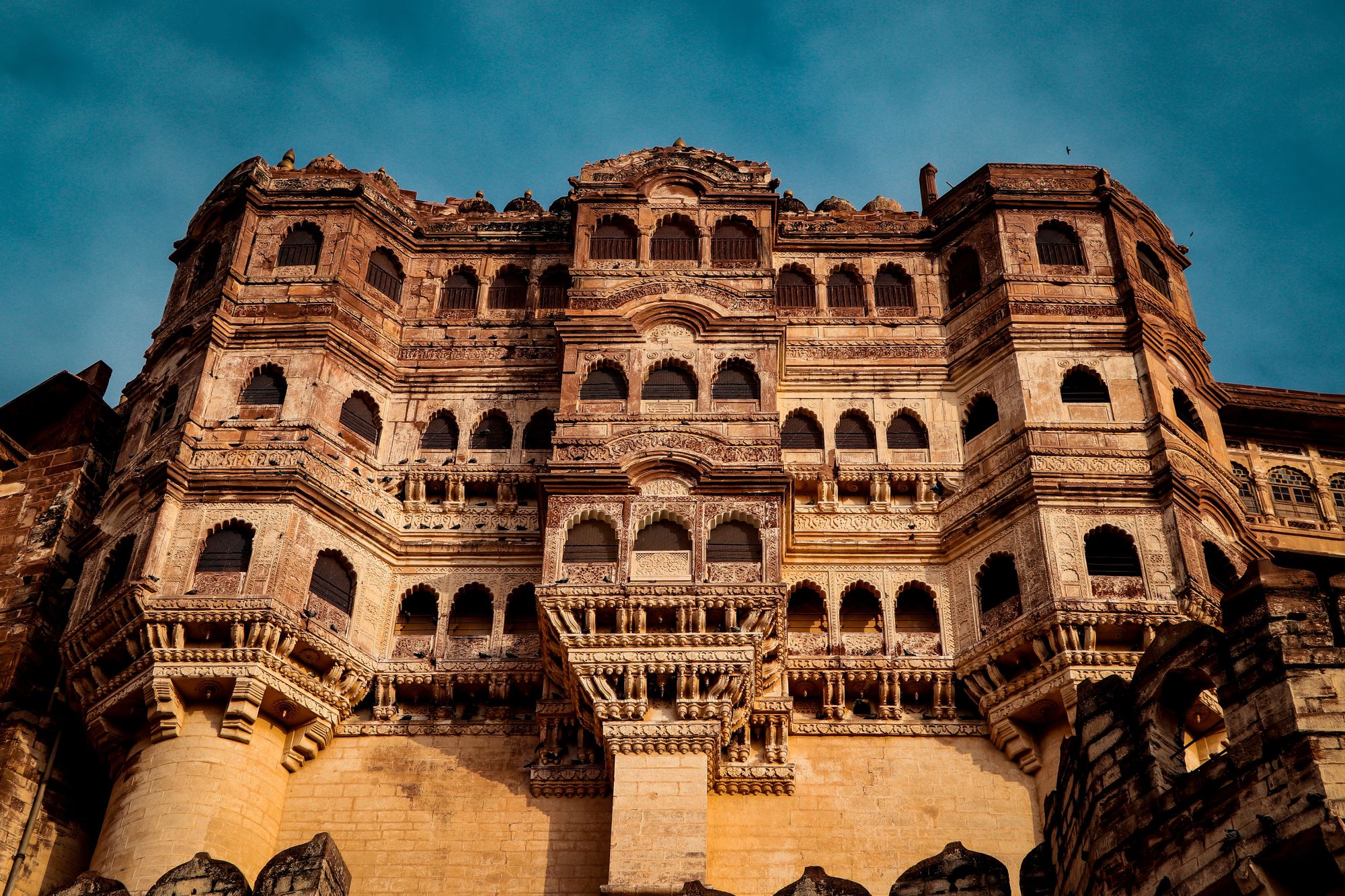
Spots to visit in Jodhpur
Arranged at 125m over the city, the fortification is around 120 feet tall. Inherent the late fifteenth century, the fortress presently fills in as a gallery. One can visit the whole fortification in around 2-3 hours and witness the relics of the past. Different antiquities like the dresses of the officers, their weapons, even the groups should be visible. The popular shade of blue hued houses should be visible from the highest point of the fortress.
Key Features of Mehrangarh Fort:
Historical Significance: Mehrangarh Fort was built by Rao Jodha, the founder of Jodhpur, in 1459. The fort's construction continued over the centuries, with various rulers adding palaces, gates, and intricate structures to the complex.
Architectural Marvel: The fort's architecture is a blend of Rajput and Mughal styles, reflecting the cultural fusion that occurred during its construction. Intricate carvings, expansive courtyards, and beautiful latticed windows characterize the fort's design.
Seven Gates: To reach the fort's main palaces, visitors must pass through a series of seven gates, each with its own significance. Notable gates include the Victory Gate (Jai Pol) and the Fateh Gate, commemorating Maharaja Ajit Singh's victory over the Mughals.
Palaces within the Fort:
Mehrangarh Museum: The fort houses a museum that showcases an impressive collection of artifacts, weapons, textiles, and artwork reflecting the history and culture of the Marwar region. The museum provides a detailed insight into the lifestyle of the royal families.
Jaswant Thada: Adjacent to Mehrangarh Fort is Jaswant Thada, a cenotaph built in memory of Maharaja Jaswant Singh II. This stunning marble structure features delicate carvings and offers a serene retreat with expansive gardens.
Events and Festivals: Mehrangarh Fort serves as a venue for cultural events, music festivals, and celebrations. The Rajasthan International Folk Festival (RIFF) is a notable annual event that attracts artists and enthusiasts from around the world.
Tourist Experience: Visitors can explore Mehrangarh Fort at their own pace, marveling at the intricate architecture, visiting the various palaces, and enjoying the breathtaking views of Jodhpur from different vantage points within the fort.
Mehrangarh Fort stands as a symbol of Jodhpur's rich history and the indomitable spirit of the Marwar rulers. Its grandeur, coupled with the city's blue-painted houses in the backdrop, makes it an iconic destination for history lovers, architecture enthusiasts, and cultural explorers.
How To Reach Mehrangarh Fort

Cng Bus
Mehrangarh Fort is situated atop a hill in Jodhpur, Rajasthan, providing panoramic views of the city below. Access to the fort is relatively convenient, and visitors can choose from various modes of transportation. Here's how to reach Mehrangarh Fort:
By Air: The nearest airport to Jodhpur is the Jodhpur Airport (JDH), which is well-connected to major cities in India. Once you arrive at the airport, you can hire a taxi or use other local transportation options to reach Mehrangarh Fort, which is approximately 5 kilometers away.
By Train: Jodhpur Junction is a major railway station in Rajasthan and is well-connected to various cities across the country. From the railway station, Mehrangarh Fort is around 5 kilometers away. Taxis, auto-rickshaws, and other local transportation services are readily available at the station.
By Road: Jodhpur has an extensive road network, and reaching Mehrangarh Fort by road is a popular option. You can hire a taxi, take an auto-rickshaw, or use the local bus services to reach the fort. Jodhpur is well-connected by roads to major cities in Rajasthan and neighboring states.
Auto-rickshaws and Taxis: Auto-rickshaws and taxis are readily available in Jodhpur and offer a convenient way to reach Mehrangarh Fort. Ensure that you negotiate fares beforehand, especially if you're hiring an auto-rickshaw.
Local Buses: Jodhpur has a well-developed local bus network, and you can take a bus to reach Mehrangarh Fort. Local buses are an economical option, but they might not be as comfortable as private transportation.
Walking: If you're staying in the vicinity of Mehrangarh Fort or the Clock Tower area, it is possible to walk to the fort. However, be mindful of the uphill climb, especially during the warmer months.
Guided Tours: Many tourists prefer joining guided tours or hiring local guides to visit Mehrangarh Fort. This can provide valuable insights into the history and architecture of the fort, enhancing your overall experience.
Entry Gates: Mehrangarh Fort has several entry gates, and visitors can access the fort through different routes. The main entrance is through the Fateh Pol, near the ticket counter and museum.
Whether you choose to arrive by air, train, or road, reaching Mehrangarh Fort is convenient and offers a glimpse into the architectural and historical splendor of Jodhpur. Enjoy the journey as you make your way to this iconic fort that stands as a testament to the grandeur of Rajasthan's heritage.
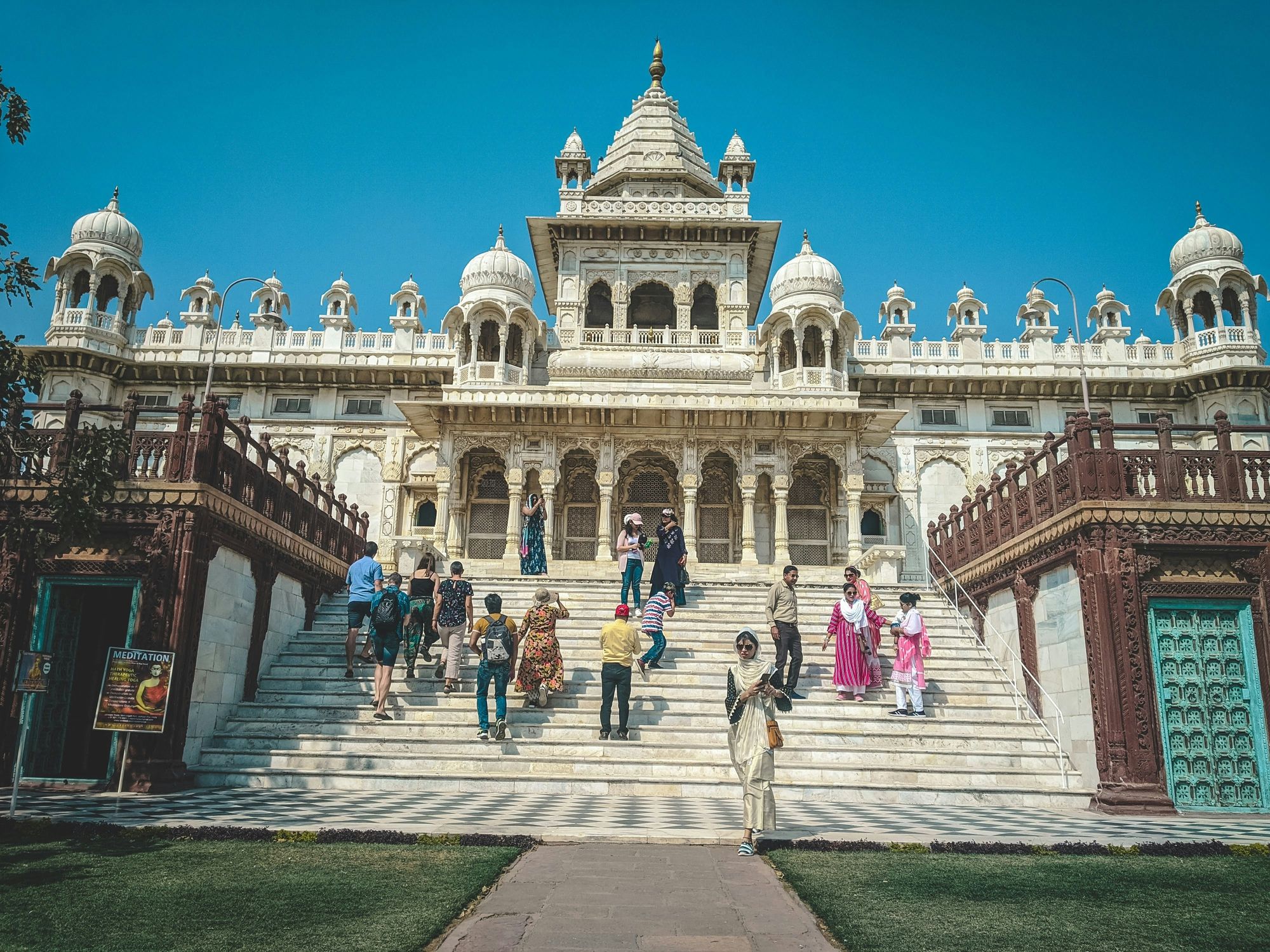
Jaswant Thada
A cenotaph (a vacant burial place) was worked by the Maharaja Sardar Singh in 1899, in memory of his dad. The cenotaph has been fabricated delightfully to the point that it spellbinds the interests of thousands of draftsmen all over the planet consistently. The sheets of marble that have been utilized to construct the design are planned so that they radiate a warm sparkle when they are presented to the beams of the sun.
Key Features of Jaswant Thada:
Architectural Elegance: Jaswant Thada is built using intricately carved white marble, showcasing exquisite craftsmanship. The marble sheets are so thin and polished that they emit a warm glow when illuminated by the sun, giving the monument its ethereal appearance.
Cenotaphs and Memorials: The main cenotaph is dedicated to Maharaja Jaswant Singh II and features detailed marble carvings. The cenotaph is adorned with portraits of rulers of Marwar and is surrounded by smaller memorials dedicated to other members of the royal family.
Latticed Windows and Marble Jalis: The monument boasts finely carved marble jalis (perforated screens) and latticed windows that allow filtered sunlight to create a soft, enchanting ambiance within. The delicate carvings depict scenes from Hindu mythology and ornate patterns.
Gardens and Water Bodies: Jaswant Thada is surrounded by well-maintained gardens with lush greenery and colorful flowers. The site also includes a small lake and gazebos, providing a tranquil setting for visitors to relax and enjoy the peaceful atmosphere.
Cenotaph of Maharaja Jaswant Singh II: The central cenotaph of Maharaja Jaswant Singh II stands out with its intricate carvings, depicting scenes from the Rathore dynasty's history. The marble lattice work adds a touch of grace and intricacy to the structure.
Chhatri of Maharaja Sardar Singh: Adjacent to the main cenotaph is the Chhatri of Maharaja Sardar Singh. This smaller memorial is equally adorned with delicate carvings and serves as an extension of the artistic beauty found throughout Jaswant Thada.
Memorial to a Peacock: There is a memorial stone dedicated to a peacock near the entrance, symbolizing the respect for wildlife. It is believed that a peacock sacrificed its life here, protecting a young prince.
View of Mehrangarh Fort: Jaswant Thada offers stunning views of Mehrangarh Fort and the city of Jodhpur. The monument's strategic location on a small hill enhances its visual appeal and provides visitors with picturesque landscapes.
Cultural Performances: Occasionally, Jaswant Thada serves as a venue for cultural performances and events, adding to the cultural vibrancy of Jodhpur.
Jaswant Thada stands as a serene tribute to the rulers of Marwar and is a must-visit destination for those exploring Jodhpur. The monument's architectural beauty, tranquil surroundings, and historical significance make it a peaceful oasis that complements the grandeur of Mehrangarh Fort.
How To reach Jaswant Thada

Spots to visit in Jodhpur
Jaswant Thada is located in Jodhpur, Rajasthan, and is easily accessible from various parts of the city. Here are the different ways to reach Jaswant Thada:
By Air: The nearest airport is Jodhpur Airport (JDH), which is well-connected to major cities in India. Upon landing at the airport, you can hire a taxi or use other local transportation options to reach Jaswant Thada, which is approximately 6 kilometers away.
By Train: Jodhpur Junction is a major railway station, well-connected to various cities across the country. From the railway station, Jaswant Thada is around 3 kilometers away. Taxis, auto-rickshaws, and other local transportation services are readily available at the station.
By Road: Jodhpur has a well-developed road network, and reaching Jaswant Thada by road is a convenient option. You can hire a taxi, take an auto-rickshaw, or use the local bus services to reach the monument. Jodhpur is well-connected by roads to major cities in Rajasthan and neighboring states.
Auto-rickshaws and Taxis: Auto-rickshaws and taxis are readily available in Jodhpur and offer a convenient way to reach Jaswant Thada. Ensure that you negotiate fares beforehand, especially if you're hiring an auto-rickshaw.
Local Buses: Jodhpur has a well-organized local bus network, and you can take a bus to reach Jaswant Thada. Local buses are an economical option, but they might not be as comfortable as private transportation.
Walking: If you're staying in the vicinity of Jaswant Thada or Mehrangarh Fort, it is possible to walk to the monument. The walk provides an opportunity to explore the local surroundings and enjoy the view of Mehrangarh Fort in the distance.
Guided Tours: Many tourists prefer joining guided tours or hiring local guides to visit Jaswant Thada. This can provide valuable insights into the history and architecture of the cenotaph, enhancing your overall experience.
Entry Gates: Jaswant Thada has multiple entry gates, and visitors can access the site through different routes. The main entrance is usually the starting point for exploring the cenotaph and its surroundings.
Whether you choose to arrive by air, train, or road, reaching Jaswant Thada is relatively easy, and it promises a serene and culturally rich experience. Enjoy the journey as you make your way to this beautiful architectural gem in Jodhpur.
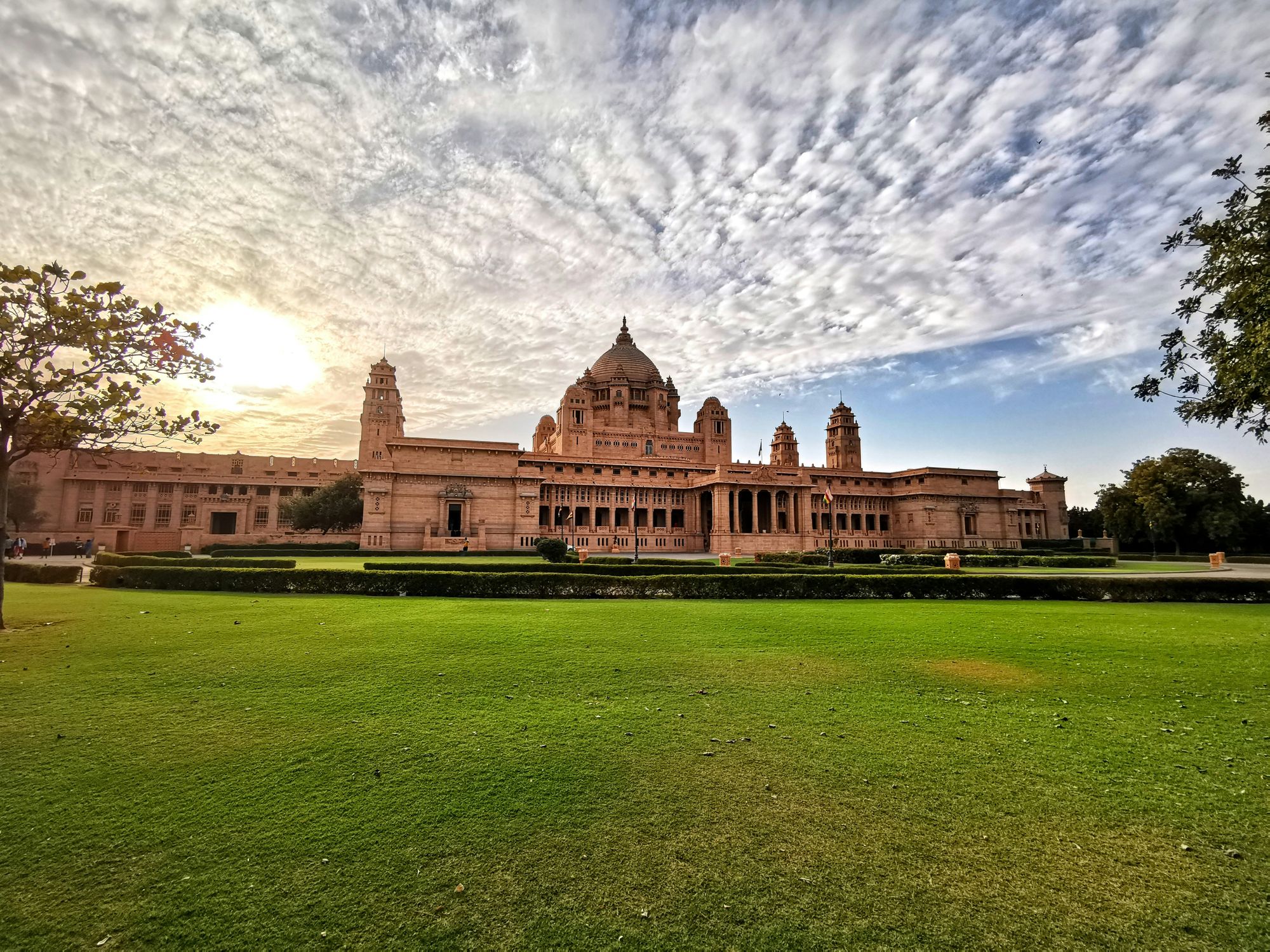
Umaid Bhawan Palace
Being one of the world's biggest private homes, Umaid Bhawan Palace will give your visit the imperial look like no other. A little part is claimed by Taj Hotels and one more is utilized by the relatives of the illustrious family. The remainder of the royal residence has been changed over into an exhibition hall Take Jodhpur Taxi Service to reach at Umaid Bhawan Palace.
History:
Architecture:
Key Features:
Palace Wings:
Museum:
Luxury Hotel:
Landscaped Gardens:
Public Access:
Pillars and Domes:
Umaid Heritage Art School:
Facts:
Umaid Bhawan Palace stands as a testament to the vision of Maharaja Umaid Singh and the architectural brilliance of the time. Its combination of royal residence, luxury hotel, and museum makes it a multifaceted landmark in Jodhpur, attracting visitors from around the world.
How to Reach Umaid Bhawan

How to Reach Umaid Bhawan
Umaid Bhawan Palace is located in Jodhpur, Rajasthan, and it is easily accessible by various modes of transportation. Here's how you can reach Umaid Bhawan Palace:
By Air: The nearest airport is Jodhpur Airport (JDH), which is well-connected to major cities in India. Once you arrive at the airport, you can hire a taxi or use other local transportation options to reach Umaid Bhawan Palace, which is approximately 5 kilometers away.
By Train : Jodhpur Junction is a major railway station, well-connected to various cities across the country. From the railway station, Umaid Bhawan Palace is around 4 kilometers away. Taxis, auto-rickshaws, and other local transportation services are readily available at the station.
By Road: Jodhpur has a well-developed road network, and reaching Umaid Bhawan Palace by road is a convenient option. You can hire a taxi, take an auto-rickshaw, or use the local bus services to reach the palace. Jodhpur is well-connected by roads to major cities in Rajasthan and neighboring states.
Auto-rickshaws and Taxis: Auto-rickshaws and taxis are readily available in Jodhpur and offer a convenient way to reach Umaid Bhawan Palace. Ensure that you negotiate fares beforehand, especially if you're hiring an auto-rickshaw.
Local Buses: Jodhpur has a well-organized local bus network, and you can take a bus to reach Umaid Bhawan Palace. Local buses are an economical option, but they might not be as comfortable as private transportation.
Walking: If you're staying in the vicinity of Umaid Bhawan Palace, it may be possible to walk to the palace. However, keep in mind that the walk might be long, and the roads can be busy, so this option is more suitable for those in the nearby areas.
Guided Tours: Many tourists prefer joining guided tours or hiring local guides to visit Umaid Bhawan Palace. This can provide valuable insights into the history and architecture of the palace, enhancing your overall experience.
Entry Gates: Umaid Bhawan Palace has multiple entry gates, and visitors can access the palace through different routes. The main entrance is usually the starting point for exploring the palace and its surroundings.
Whether you choose to arrive by air, train, or road, reaching Umaid Bhawan Palace is relatively easy, and it promises a luxurious and culturally rich experience. Enjoy the journey as you make your way to this majestic palace in Jodhpur.
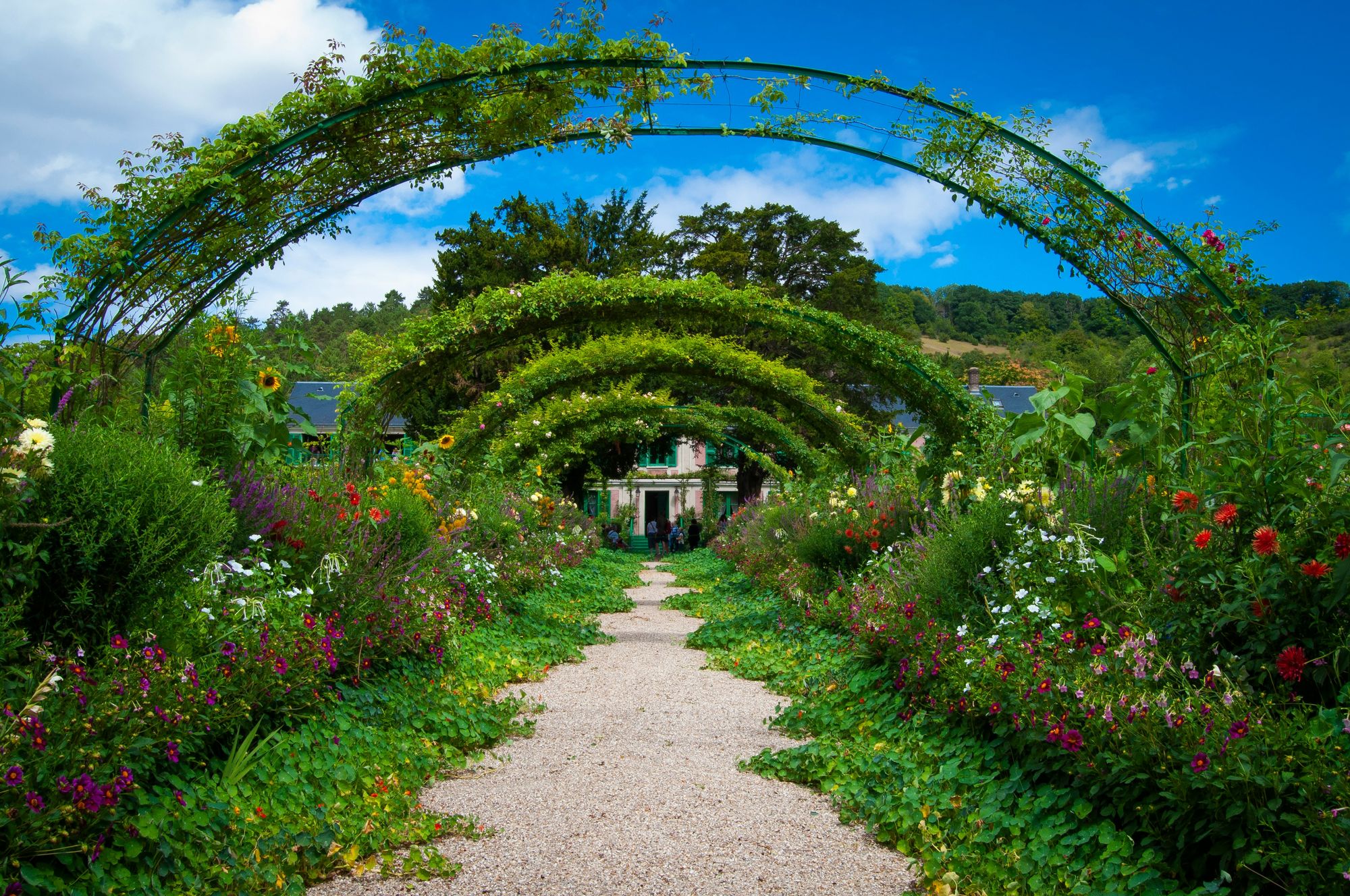
Mandore Garden
It used to be the old capital of Jodhpur and went into ruins after the family moved to the Mehrangarh post. The spot is old to such an extent that you track down its presence in the texts of Ramayan Recollect Ravan's significant other name Mandodari, well it is no incident that the name "Mandodari" and "Mandore" appears to be so comparative since she was from Mandavypur (old name of Mandore) as it were.
Mandore Garden is a historical garden located in the city of Jodhpur, Rajasthan, India. It is situated about 9 kilometers north of the main city and is known for its architectural heritage, landscaped gardens, and historic memorials. Here's a detailed overview of Mandore Garden:
History and Significance:
Key Features:
Mandore Cenotaphs (Devalis):
Hall of Heroes (Shrine of the Three Hundred Million Gods):
Mandore Fort:
Mandore Temple:
Mandore Museum:
Ruin of a Government House:
Landscaped Gardens:
Music and Cultural Events:
Accessibility:
Timings and Entry Fee:
How to Reach Mandore Garden

Cng Car
Mandore Garden is located about 9 kilometers north of the main city of Jodhpur, Rajasthan. Here are several ways to reach Mandore Garden:
By Air:
By Train:
By Road:
By Car:
Walking:
Guided Tours:
Entry Gates:
Before planning your visit to Mandore Garden, it's advisable to check the timings, entry fees, and any specific guidelines. The garden is a historically significant and culturally rich site, and the journey to reach it can be part of the overall experience, offering glimpses of the local surroundings and the city of Jodhpur.
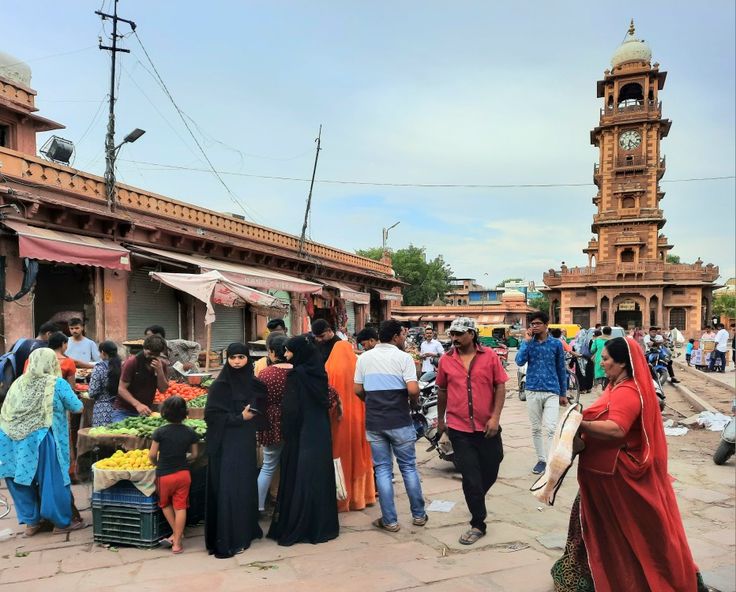
Clock Tower and Sardar Market
The Clock Tower and Sardar Market are iconic landmarks situated in the heart of Jodhpur, Rajasthan, India. These structures are not only significant for their architectural charm but also serve as vibrant hubs for shopping and cultural experiences. Here are more details about the Clock Tower and Sardar Market:
Clock Tower (Ghanta Ghar):
Location: The Clock Tower, locally known as Ghanta Ghar, is located in the bustling Sardar Market area of Jodhpur. It stands prominently at the center of the city, making it easily accessible.
Architecture: The Clock Tower is a fine example of Rajputana architecture. It is a five-story tower with a clock at the top, and each level is adorned with intricate carvings and detailing.
Historical Significance: The Clock Tower was built by Maharaja Sardar Singh in the late 19th century. It was constructed to commemorate the noble rule of his father, Maharaja Jaswant Singh.
Timekeeping Mechanism: The clock on the tower, with its delicate golden frame, is a mechanical marvel. It has been functional for many decades and continues to keep time for the bustling city below.
Viewpoint: The top of the Clock Tower offers panoramic views of the surrounding areas, including the blue-painted houses of Jodhpur and the nearby Mehrangarh Fort.
Sardar Market:
Location: Sardar Market, also known as Clock Tower Market, surrounds the area adjacent to the Clock Tower. It is a lively market that attracts locals and tourists alike.
Shopping Experience: Sardar Market is a shopper's paradise, offering a wide array of goods. Visitors can explore vibrant shops and stalls selling textiles, handicrafts, traditional Rajasthani clothing, jewelry, spices, and more.
Clock Tower Market: The market area around the Clock Tower is often referred to as Clock Tower Market. It is a central point for various activities, and the market is named after the prominent Clock Tower.
Bazaars and Alleys: The market is characterized by narrow alleys and bazaars, each specializing in different types of products. It's a delightful maze where one can find unique items and experience the local culture.
Local Cuisine: Sardar Market is also known for its street food stalls and local eateries. Visitors can indulge in Rajasthani snacks, sweets, and traditional beverages while exploring the market.
Cultural Hub: The market is not just a place for shopping; it's a cultural hub where you can witness the daily life of Jodhpur residents, interact with locals, and experience the vibrant atmosphere.
Festivals and Events: Sardar Market is often a venue for local festivals and events, contributing to the festive spirit of Jodhpur.
Photography Opportunities: The Clock Tower and Sardar Market offer excellent opportunities for photography, capturing the essence of Jodhpur's markets, architecture, and vibrant street life.
Visiting the Clock Tower and Sardar Market is a must for anyone exploring Jodhpur. The combination of historical architecture, colorful markets, and the lively atmosphere makes it a memorable experience for tourists and a regular haunt for locals.
How to Reach Clock Tower and Sardar Market

How to Reach Clock Tower and Sardar Market by car
Clock Tower and Sardar Market are centrally located in Jodhpur, Rajasthan, making them easily accessible from various parts of the city. Here are different ways to reach Clock Tower and Sardar Market:
By Air:
By Train:
By Road:
Local Buses: Jodhpur has a well-organized local bus network. You can take a local bus from various points in the city to reach Clock Tower and Sardar Market. Bus services may have designated stops near the market area.
Taxis and Auto-rickshaws: Taxis and auto-rickshaws are readily available in Jodhpur. You can hire one to reach Clock Tower and Sardar Market directly. Ensure that you negotiate fares beforehand, especially if you're hiring an auto-rickshaw.
By Car: If you prefer a more private mode of transportation, you can hire a private car or use ride-sharing services to reach Clock Tower and Sardar Market. The roads are well-connected, and the market area is centrally located.
Walking: If you're staying in the vicinity of Clock Tower and Sardar Market, it may be possible to walk to the area. However, be mindful of the distance and consider the weather conditions, especially during warmer months.
Guided Tours: Many tourists prefer joining guided tours or hiring local guides to explore the Clock Tower and Sardar Market. This can provide valuable insights into the history, culture, and vibrant atmosphere of the area.
Entry Gates: The Clock Tower and Sardar Market have multiple entry points, and you can access the area through different routes. The main entrance is usually near the Clock Tower.
Before planning your visit to Clock Tower and Sardar Market, it's advisable to check the timings, any specific guidelines, and explore the market at different times of the day to experience its lively atmosphere. The central location of the market makes it a convenient destination for both tourists and locals alike.

Rao Jodha Desert Rock Park
Certainly! Rao Jodha Desert Rock Park is a unique ecological and heritage restoration initiative located at the foothills of Mehrangarh Fort in Jodhpur, Rajasthan, India. Here are more details about Rao Jodha Desert Rock Park:
History and Establishment:
Key Features:
Flora and Fauna: The park showcases a variety of desert-adapted plant species, including succulents, shrubs, and trees. The vegetation has been carefully selected to mimic the natural ecology of the Thar Desert.
Rock Formations: The rocky terrain of the park is a prominent feature, and it includes unique rock formations and outcrops. Visitors can explore the rugged landscape while enjoying panoramic views of Mehrangarh Fort and the city.
Biodiversity: The park is home to diverse wildlife, including a variety of bird species, insects, reptiles, and small mammals. The restoration efforts have aimed to create a balanced ecosystem within the arid environment.
Heritage Conservation: In addition to its ecological focus, the park also emphasizes the conservation of historical and cultural heritage. It features the remains of an old citadel wall, providing a link to the historical significance of the region.
Walking Trails: Visitors can explore well-laid-out walking trails that wind through the park, allowing them to experience the natural beauty and tranquility of the desert landscape.
Bird Watching: Bird enthusiasts can enjoy bird-watching in the park, as it attracts various bird species, especially during migratory seasons.
Educational Programs: The park conducts educational programs, workshops, and guided tours to create awareness about desert ecosystems, biodiversity, and the importance of conservation.
Visitor's Centre: The park has a visitor's center that provides information about the flora, fauna, and the park's conservation efforts. It also serves as a starting point for guided tours.
Accessibility: Rao Jodha Desert Rock Park is located near Mehrangarh Fort in Jodhpur, making it easily accessible from the city center. Visitors can reach the park by walking or hiring local transportation.
Timings and Entry Fee: The park is generally open to the public throughout the week, and there may be a nominal entry fee. It is advisable to check the timings and entry fees before planning a visit.
Rao Jodha Desert Rock Park is not only a haven for nature enthusiasts but also a model for sustainable conservation efforts in arid landscapes. The harmonious blend of ecological restoration, heritage conservation, and educational initiatives makes it a noteworthy destination for those seeking a deeper understanding of the desert environment.
How to Reach Rao Jodha Desert Rock Park

Cng Car
Rao Jodha Desert Rock Park is located near Mehrangarh Fort in Jodhpur, Rajasthan, and it is easily accessible from various parts of the city. Here are different ways to reach Rao Jodha Desert Rock Park:
By Air:
By Train:
By Road:
Local Buses: Jodhpur has a well-organized local bus network. You can take a local bus from various points in the city to reach Mehrangarh Fort, and from there, it's a short distance to Rao Jodha Desert Rock Park.
Taxis and Auto-rickshaws: Taxis and auto-rickshaws are readily available in Jodhpur. You can hire one to reach Mehrangarh Fort and then proceed to Rao Jodha Desert Rock Park. Ensure that you negotiate fares beforehand.
By Car: If you prefer a more private mode of transportation, you can hire a private car or use ride-sharing services to reach Rao Jodha Desert Rock Park. The roads are well-connected, and the park is located near the popular Mehrangarh Fort.
Walking: If you're staying in the vicinity of Mehrangarh Fort or Rao Jodha Desert Rock Park, it may be possible to walk to the park. The walk provides an opportunity to enjoy the surroundings and the scenic views of Mehrangarh Fort.
Guided Tours: Many tourists prefer joining guided tours or hiring local guides to explore Mehrangarh Fort and its surrounding areas, including Rao Jodha Desert Rock Park. This can enhance your overall experience by providing insights into the history and ecology of the region.
Entry Gates: Rao Jodha Desert Rock Park is located near Mehrangarh Fort, and visitors can access it through the fort's entry gates. The park has a dedicated entrance near the fort.
For nature enthusiasts, this ecological park offers a unique opportunity to explore the arid landscape and indigenous plant species of the Thar Desert. The walking trails provide stunning views of Mehrangarh Fort.
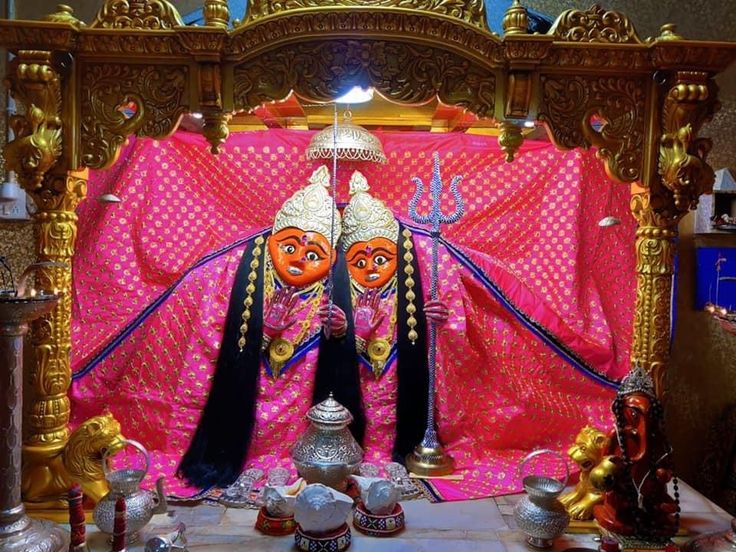
Chamunda Mata Temple
Certainly! Chamunda Mata Temple is a revered Hindu temple located in the city of Jodhpur, Rajasthan, India. Dedicated to Goddess Chamunda, a manifestation of the Hindu goddess Durga, the temple is situated on the southern slope of Mehrangarh Fort. Here are more details about Chamunda Mata Temple:
History and Significance:
Location:
Architectural Features:
Religious Practices:
Accessibility:
Scenic Views:
History and Significance:
Location:
Architectural Features:
Religious Practices:
Accessibility:
Scenic Views:
Chamunda Mata Temple is not only a religious site but also a destination for those seeking cultural and architectural experiences. Its location within the grand Mehrangarh Fort adds to its allure, making it a notable attraction for visitors exploring the rich heritage of Jodhpur.
How to Reach Chamunda Mata Temple

Car
Chamunda Mata Temple is located within the premises of Mehrangarh Fort in Jodhpur, Rajasthan, India. Here are different ways to reach Chamunda Mata Temple:
By Air:
By Train:
By Road:
By Car: If you prefer a more private mode of transportation, you can hire a private car or use ride-sharing services to reach Mehrangarh Fort. The roads are well-connected, and the temple is located within the fort complex.
Walking: If you're staying in the vicinity of Mehrangarh Fort, it may be possible to walk to the fort and reach Chamunda Mata Temple within the complex. However, keep in mind that the ascent involves climbing a series of steps.
Guided Tours: Many tourists prefer joining guided tours to Mehrangarh Fort, and Chamunda Mata Temple is often included in these tours. Experienced guides provide insights into the historical and religious significance of the temple.
Entry Gates: Mehrangarh Fort has multiple entry gates, and visitors can access the fort and Chamunda Mata Temple through different routes. The main entrance is usually near the ticket counter, and the ascent to the temple involves climbing a series of steps.
Before planning your visit to Chamunda Mata Temple, it's advisable to check the timings and any specific guidelines related to Mehrangarh Fort. Exploring the temple as part of the larger fort complex allows you to appreciate the cultural, historical, and religious significance of this iconic site in Jodhpur.
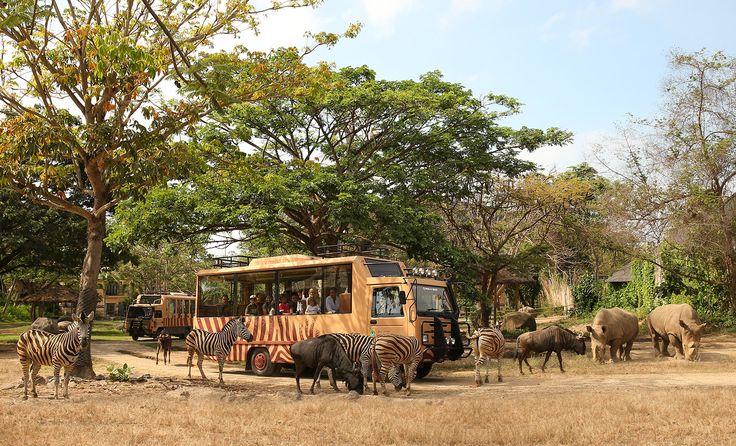
Machiya Safari Park
As of my last knowledge update in January 2022, I don't have specific information about a place called "Machiya Safari Park" in Jodhpur or any other location. It's possible that the place you're referring to might be a new attraction or a location that wasn't widely recognized or documented in publicly available sources up to that point.
To get the most accurate and up-to-date information about Machiya Safari Park or any new attractions, I recommend checking with local tourism websites, contacting the tourism board of Jodhpur, or looking for recent travel reviews or articles that may provide details about this specific location.
If Machiya Safari Park is a relatively new development, local authorities or tourism offices would likely have the latest information on its features, activities, and how to reach there. Additionally, travel forums and websites where tourists share their experiences can also be valuable resources for the latest updates on attractions in specific locations.
How to Reach Machiya Safari Park

Cng Van
If "Machiya Safari Park" is a new development or a local attraction, the best way to find information on how to reach there would be to check with local tourism authorities, visit the official website of Jodhpur tourism, or look for recent travel reviews or articles that might provide details on its location and accessibility.
For general advice on reaching attractions in Jodhpur or any other location, common modes of transportation include:
By Air: If the destination has an airport, you can fly into the nearest airport and then use local transportation (taxis, buses) to reach the park.
By Train: Check if there's a railway station nearby. You can then take a train to the nearest railway station and proceed to the park by local transportation.
By Road: If you're traveling by road, you can use local buses, hire a taxi, or use ride-sharing services to reach the destination.
Local Transportation: Once you are in the vicinity, you can use local transportation options like auto-rickshaws, taxis, or rented vehicles to reach specific attractions.
Ideal for wildlife enthusiasts, this park offers a chance to spot various species of deer, birds, and native flora. The park also hosts activities like bird watching and nature walks.
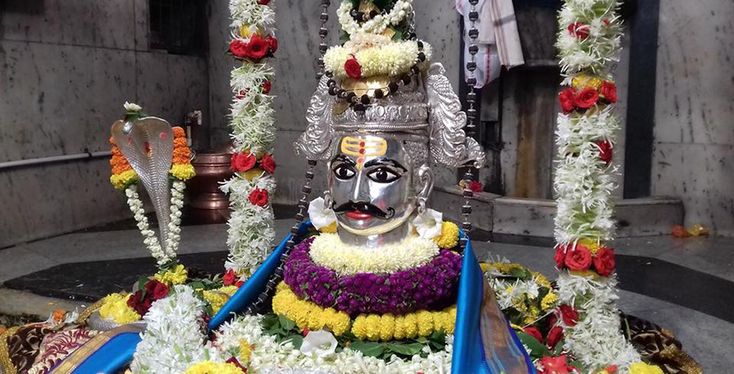
Mandaleshwar Mahadev Temple
There are several temples in India named Mandaleshwar Mahadev Temple, and I need more information to understand which one you're interested in. Here are some possibilities:
Mandaleshwar Mahadev Temple, Jodhpur:
Mandaleshwar Mahadev Temple, Varanasi:
Maha Mandleshwar Mahadev Mandir:
Other possibilities:
Please specify the location, any specific details you know about the temple, or any other information that can help me identify the exact temple you're interested in. With more information, I can provide you with a more detailed explanation about its history, significance, architecture, timings, and other relevant details.
How to Reach Mandaleshwar Mahadev Temple

Cng Bus
Online Maps: Use online mapping services like Google Maps or other navigation apps to find the location of Mandaleshwar Mahadev Temple. Enter the temple's name and location details to get directions.
Local Transportation: Depending on the location of the temple, you may need to use local transportation options such as buses, taxis, or auto-rickshaws. Ask locals or consult with your accommodation for the best way to reach the temple.
Private Transportation: If the temple is in a remote area, you might consider hiring a private vehicle or using your own transportation. Make sure to check the road conditions and accessibility.
Local Assistance: Seek guidance from locals or the tourism office in the area. They can provide specific directions, transportation options, and any additional information about reaching the temple.
Travel Websites: Check travel websites or forums for information and tips from people who have visited the Mandaleshwar Mahadev Temple. They may share their experiences and offer guidance on transportation.
Contact the Temple: If the temple has a contact number or an official website, consider reaching out to them for information on the best way to reach the temple and any specific instructions for visitors.
Located inside Mehrangarh Fort, this ancient temple dedicated to Lord Shiva showcases intricate carvings and provides a serene spot for reflection.
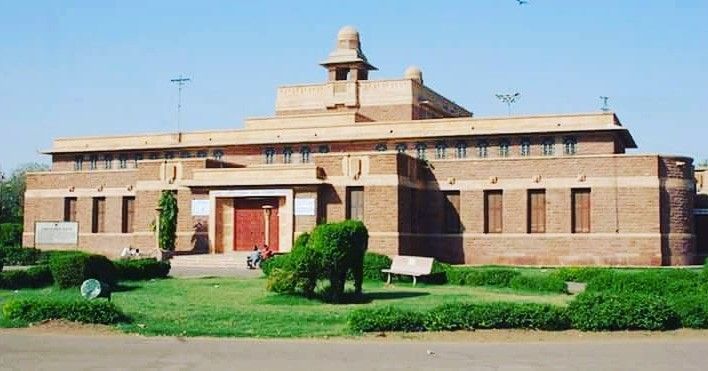
Sardar Government Museum
Ah, it seems you've switched gears from temples to museums! There are actually two significant museums known as Sardar Government Museum in India. To answer your question accurately, I need to know which one you're interested in:
Sardar Government Museum, Jodhpur: This museum is located in Rajasthan and boasts a rich collection showcasing the artistic, cultural, and historical heritage of the region. Here are some details:
Sardar Museum, Varanasi: This museum is located in Uttar Pradesh and has a more specialized focus. However, I need more information to identify the specific museum and provide details, such as its location or area of focus.
Knowing which Sardar Government Museum you're interested in will help me tailor my explanation to your specific needs.
For history buffs, the Sardar Government Museum houses an extensive collection of artifacts, weapons, textiles, and miniature paintings, offering insights into Jodhpur's rich cultural heritage.
How to Reach Sardar Government Museum

Car
The Sardar Government Museum, I cannot provide detailed directions on how to reach it. If you have the name of the city or region where the museum is located, you can follow these general steps to find directions:
Online Maps: Use online mapping services like Google Maps or other navigation apps. Enter the name of the museum and the city or region to get detailed directions.
Local Transportation: Depending on the location, use local transportation options such as buses, taxis, or auto-rickshaws to reach the museum. Local residents or your accommodation provider may offer guidance on the best transportation options.
Private Transportation: Consider hiring a private vehicle or using your own transportation, especially if the museum is in a remote area. Check the road conditions and accessibility.
Local Assistance: Ask locals or visit the tourism office in the area for guidance. They can provide specific directions and transportation options to reach the Sardar Government Museum.
Contact the Museum: If the museum has a contact number or an official website, reach out to them for information on the best way to reach the museum and any specific instructions for visitors.
Travel Websites: Check travel websites or forums for information and tips from people who have visited the museum. They may share their experiences and offer guidance on transportation.
Writer and content creator
Log in to share your thoughts and engage with other readers.